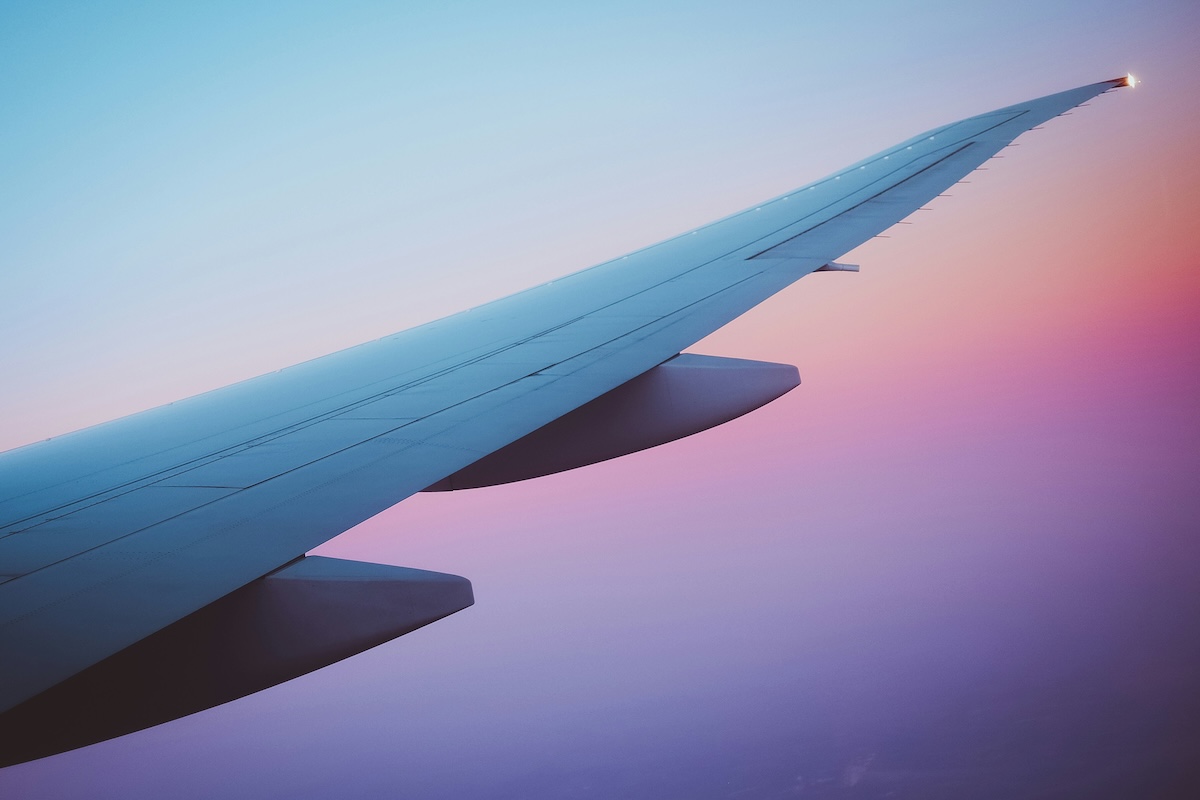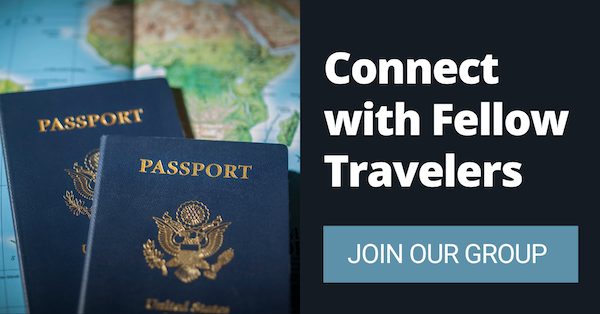
How to Manage Anxiety During Long Flights
By: Sarah Stone
Skip to Section
Article Summary
Think long flights turn you into a ball of nerves? You’re not the only one white-knuckling the armrests – but you don’t have to spend 10 hours in panic mode.
This guide gives you practical strategies to keep your cool at 35,000 feet, from breathing techniques that actually work to smart seat selection that puts you in control. You’ll learn how to prep like a pro, pack a comfort kit that feels like home, and use grounding techniques when your brain starts playing disaster movies. Plus, you’ll get the facts about flying safety that your anxiety doesn’t want you to know.
- Book seats over the wing for stability or grab an aisle seat if you need freedom to move around during the flight.
- Pack lavender oil, compression socks, tea bags, and favorite snacks to create your own cozy bubble in the sky.
- Use 4-7-8 breathing or box breathing to calm your nervous system when anxiety kicks in.
- Ground yourself with the 5-4-3-2-1 method or distract your brain with downloaded shows, podcasts, and puzzle games.
- Talk to your doctor about CBT techniques or anti-anxiety options if your fear of flying seriously impacts your travel plans.
For some, a long-haul flight is an exciting prelude to adventure. For others? It’s a nerve-wracking, hours-long battle with restlessness, claustrophobia, and an overactive imagination. If you struggle with flight anxiety, whether it’s mild discomfort or full-on panic, you’re not alone. The good news? There are ways to manage it, ease your nerves, and enjoy the journey.
Here’s how to get through a long flight with your sanity intact.
Set Yourself Up for Success Before Takeoff
Anxiety is often worst when we feel unprepared or out of control. A little planning can make a huge difference.
When booking your flight, choose a seat that feels comfortable. If turbulence makes you anxious, pick a seat over the wing, as this is the most stable area, closest to the airplane’s center of gravity. Need to get up and move around? Go for an aisle seat so you can easily come and go as you please.
As your flight date gets closer, check details like flight duration, meal schedule, and any layovers you might have. Writing down your plans, like how to get from Point A to Point B during your layover, may help if you feel overwhelmed.
And, of course, arrive at the airport early! Rushing through security while already anxious is not a great start to a fun getaway. Give yourself plenty of time at the airport.
Pack a Comfort Kit
Having a small bag of comforting items can make all the difference. Pack a comfort kit with lavender or peppermint oil, which are calming scents that can help relax the mind; compression socks to prevent swelling and help circulation; a soft blanket or scarf for a cozy, comforting space; chamomile or peppermint tea (bring along a couple of tea bags and ask for hot water on the plane); and of course, don’t forget your favorite snacks! Eating something you enjoy can be grounding, too.
A little familiarity goes a long way in making a new environment feel safe.
Control Your Breathing
When anxiety spikes, breathing tends to become shallow and rapid, which can make you feel even more panicked. Try:
- 4-7-8 breathing: Inhale for four seconds, hold for seven, then exhale for eight. Repeat until you feel calmer.
- Box breathing: Inhale for four seconds, hold for four, then exhale for four, and hold for four. Keep going.
- Breathe deeply through your nose: Slow, controlled breaths signal your nervous system that you’re safe.
If you start to feel overwhelmed, close your eyes, focus on your breath, and remind yourself: this will pass.
Distract Your Brain with Something Engaging
Your mind can’t spiral into worst-case scenarios if it’s busy doing something else. Before your flight, download podcasts (something immersive!), audiobooks, movies or TV shows—especially ones that make you laugh or feel happy—and even puzzle apps or games like crosswords of Sudoku to keep you occupied.
Move Around to Release Nervous Energy
Sitting still for hours can make anxiety worse. A few simple movements can help signal to your brain that you’re not stuck, trapped, or powerless. Stretch in your seat occasionally by rolling your shoulders, rotating your ankles, and gently twisting your torso. If it’s safe, stand up and walk down the aisle every couple hours. You may also want to try progressive muscle relaxation, where you tense a muscle group, hold for a few seconds, and then release—move through different muscle groups and add breathing exercises to help calm your mind and body.
Use Grounding Techniques When Anxiety Peaks
If your mind starts racing with worst-case scenarios, try grounding yourself in the present moment:
- 5-4-3-2-1 method: Name five things you see, four things you feel, three things you hear, two things you smell, and one thing you taste.
- Hold something comforting: A soft scarf, a piece of jewelry, or a stress ball—something that physically connects you to the real world.
- Listen to white noise or calming sounds: Ocean waves, rain, or even airplane cabin noise can be surprisingly soothing!
Reframe Your Thoughts About Flying
Anxiety loves to twist reality—but facts can help combat fear.
Remember, turbulence is normal. Planes are designed to handle it, and pilots are trained experts at navigating it. As well, airplanes are incredibly safe! Statistically, flying is far safer than driving—and modern aircraft are built with backup systems for nearly everything. And to put things into even more perspective, millions fly daily. You are not alone in this experience, and I guarantee you’re far from the only one nervous about your flight!
Instead of thinking, I’m stuck on this plane for 10 hours, try, I have 10 hours to read, listen to music, and relax—something I rarely get to do.
Related: Are Airplanes Safe? These 15 Stats on Plane Safety Help Calm the Nerves
Talk to Your Doctor if Needed
If flight anxiety is severe, don’t hesitate to discuss it with a professional. Some options include:
- Cognitive Behavioral Techniques (CBT): Therapy can help rewire anxious thought patterns about flying.
- Anti-anxiety medications: If necessary, a doctor may prescribe something to take before or during the flight.
- Natural supplements: Some travelers find supplements like magnesium helpful for calming nerves.
There’s absolutely no shame in needing extra support. Your comfort matters.
Let’s Go!
Flight anxiety is tough, but it doesn’t have to control your trip. With the right strategies, you can turn a stressful flight into a manageable, even peaceful experience. And when you finally land? The adventure waiting for you will be worth it!
About the Author
 As the editor-in-chief of Frayed Passport, my goal is to help you build a lifestyle that lets you travel the world whenever you want and however long you want, and not worry about where your next paycheck will come from. I've been to 20+ countries and five continents, lived for years as a full-time digital nomad, and have worked completely remotely since 2015. If you would like to share your story with our community, or partner with Frayed Passport, get in touch with me using the form on our About page.
As the editor-in-chief of Frayed Passport, my goal is to help you build a lifestyle that lets you travel the world whenever you want and however long you want, and not worry about where your next paycheck will come from. I've been to 20+ countries and five continents, lived for years as a full-time digital nomad, and have worked completely remotely since 2015. If you would like to share your story with our community, or partner with Frayed Passport, get in touch with me using the form on our About page.Featured image by Anton Shuvalov on Unsplash
Information published on this website and across our networks can change over time. Stories and recommendations reflect the subjective opinions of our writers. You should consult multiple sources to ensure you have the most current, safe, and correct details for your own research and plans.
Frayed Passport is a participant in the Amazon Associates Program, an affiliate advertising program designed to provide a means for sites to earn advertising fees by advertising and linking to Amazon.com. We also may share links to other affiliates and sponsors in articles across our website.




